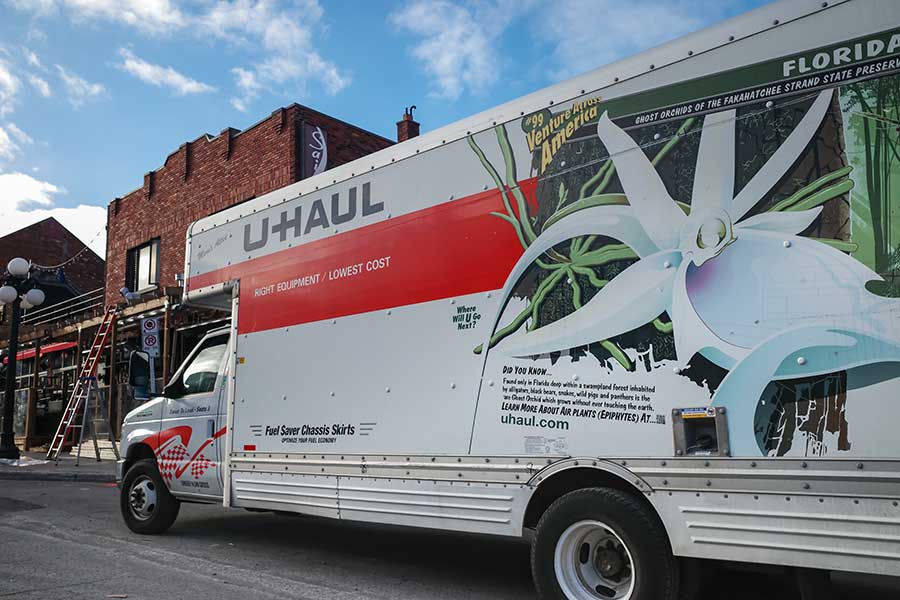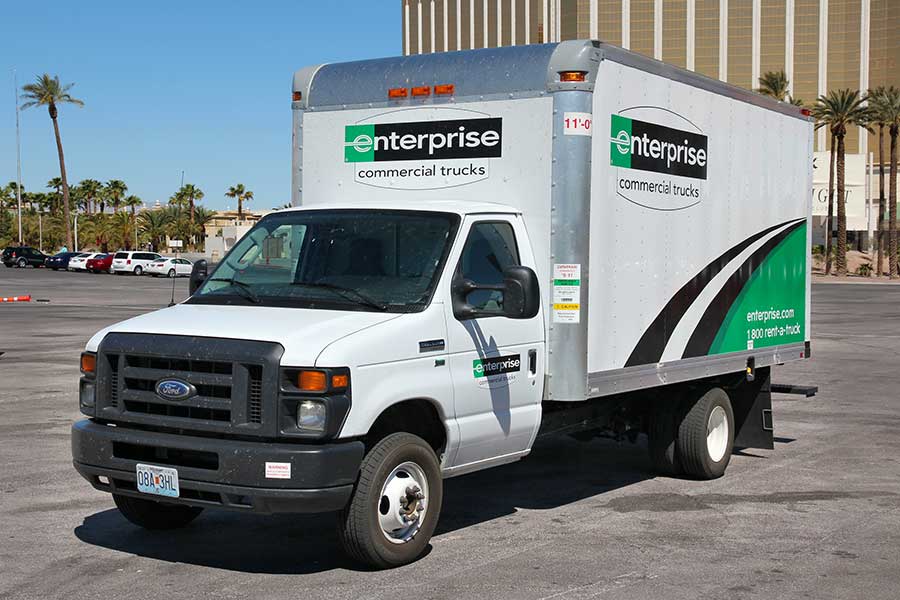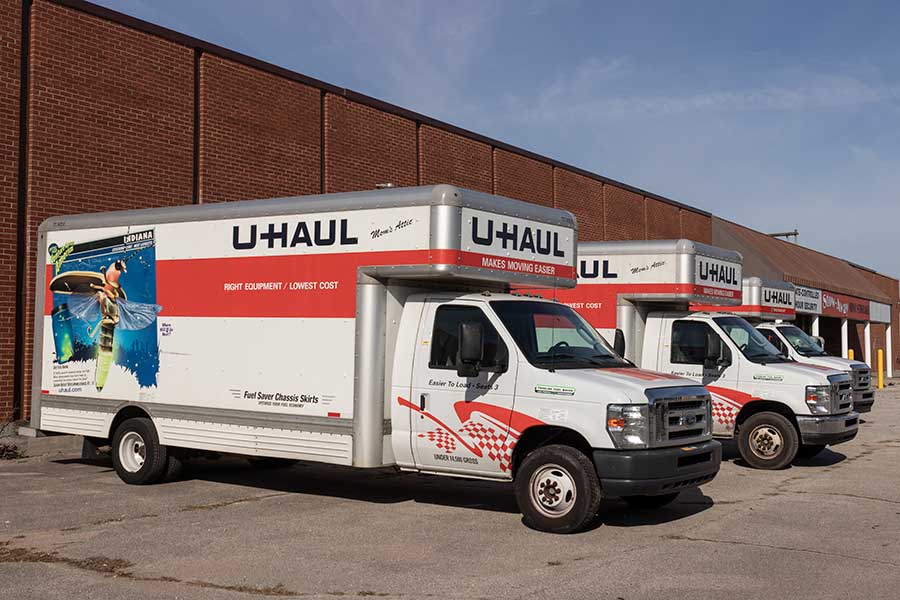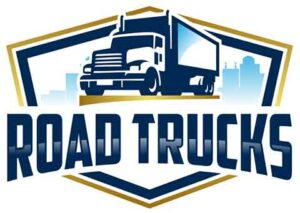Are you moving soon? Are you considering renting a 16-foot box truck to help make the move? Do you need some more information about the ins and outs of renting a 16-foot box truck prior to making the final decision? If you are finding yourself in a similar situation, this article can help you.
A 16-ft. box truck is perfect for moving, and renting it can be expensive. A renter will need to pay to rent the truck, then pay a small fee for each mile added to the truck, which can add to a lot. These box trucks can hold a lot and have bars or planks to help strap items in place.
To learn more about all you need to know about 16-foot box truck rentals, keep reading on!
Contents
- 1 How Much Does Renting Cost?
- 2 How Many Passengers Can Ride?
- 3 Specs of a 16-foot Box Truck
- 4 Notable Features
- 5 16-Foot Truck Ramp Weight and Loading Power
- 6 How Much Weight Can a 16-Foot Box Truck Hold?
- 7 How Big is a 16-Foot Box Truck?
- 8 What Can I Fit in a 16-Foot Box Truck?
- 9 How to Pack a 16-Foot Truck?
- 10 10 Foot Truck Vs. 16 Foot Truck
How Much Does Renting Cost?

The price to rent a 16-foot box truck varies from company to company. While the majority of the reason for varying prices is due to the difference in rental companies, it is also due to the difference in miles that are anticipated for travel, mileage, liability, gas, environmental fees, as well as taxes. It is typical for a move that is under 50 miles to cost anywhere between $124 to $200, and for moves that will be between 50 miles and 250 miles, $200 to $600 for each day it takes to travel to reach your final destination and then to return the rental box truck.
An example would be if you were traveling from Seattle, Washington, to Cleveland, Ohio. The rental price is typically $995, with the environmental fee charging $9 and accident coverage around $161. That leads you to a grand total of $1,165 for each day that you are traveling with the box truck. You can always ask the rental company for an estimated quote before making the decision to find the best deal, but this is a pretty standard price point for most 16-foot box trucks to be rented out for a distance like Seattle to Cleveland.
How Many Passengers Can Ride?
Because a lot of the truck is made up of that 16-foot storage capacity in the back, there isn’t much room up front in the cab for passengers to ride along with it. That being said, there is limited space for passengers other than the driver to accompany the truck between locations. It should be considered and determined how many and who will be riding in the cab in the truck to ensure that you have enough space and seats for everyone that will be traveling. If you have more people that can fit in the cab, consider driving a car separately rather than pulling it along on the back of the truck.
Cabs of 16-foot box trucks typically seat two adults while comfortably leaving space for a child’s car seat if needed. You can fit three adults in there if needed, but you should not allow a child to sit in the cab with more than two adults as there are not enough seatbelts to accommodate more than three bodies at a time. This is both to ensure a comfortable and safe ride to your destination.

Specs of a 16-foot Box Truck
While these will vary depending on the company you rent the 16-foot box truck from, these are standard dimensions of a 16-foot box truck that are very common among this length of a box truck. The interior dimensions measure up to 16 feet long, 7 feet and 7 inches wide, and 6 feet and 6 inches tall. The loading space is 800 cubic feet, with 120 square feet of floor space. The gross vehicle weight can get up to 12,500 lbs and 4,300 lbs payload. The gas tank can take up to 33 gallons with 12 miles per gallon.
It is important to understand that these are all baseline numbers and measurements. Not all 16-foot box trucks will have this amount of space, some will have more, and some will have less; it is all dependent on where you rent from, as well as the make, model, and year, how much space you will have to work with. The gas mileage will also vary depending on the weight of the load, the condition of the terrain you will be traveling on, and additional driving factors.
Notable Features
One of the benefits of choosing to travel and transport your belongings with a 16-foot box truck is not just a large amount of space to store and carry your things, but the cab up front is also designed to allow a comfortable time for the driver and passengers while driving. Some of the features that are a part of the cab of a 16-foot box truck include an automatic transmission, air conditioning and heating, two-person bucket seating, a V-8 engine, a translucent roof, as well as lighting in the cab for easier driving in the dark.
In addition to those features inside the cab, there are anti-lock brakes to make coming to a sharp stop smoother, dual-faced mirrors, cargo tie rails, power steering, and a rear roll-up door. Under the roll-up door, there is a 1,000 lbs capacity loading ramp, as well as access to a tie-down slat when the door is closed. AM/FM Radio is also available, or you can use the AUX or USB import if you prefer that. The truck is also towing compatible with towing a vehicle or an additional trailer.
16-Foot Truck Ramp Weight and Loading Power

Not only is it important to know how much the 16-foot box truck can fit in the box, but it is also important to know the ramp weight and the loading power so you are aware of what the ramp will be able to help load and what you may need to find additional assistance for to be able to load if it doesn’t meet the weight regulations for the ramp. The ramp’s maximum payload capacity is 1,000 lbs. This means that anything that is under 1,000 lbs is fine to use the loading ramp to get it into the box, but if it is over the 1000 lbs weight limit, then you risk damaging both the ramp and possibly the heavy item in loading.
It is important that you take advantage of the access you have to the loading ramp so as to not cause any injury to yourself, others, or your belongings trying to load it by yourself or with other methods. The ramp is provided to make the loading of the truck easier and safer.
How Much Weight Can a 16-Foot Box Truck Hold?
It should not be assumed that just because a 16-foot box truck can hold a greater amount, it can hold a heavier amount than a 10-foot box truck. It is not dependent on the length of the truck but on how the truck is designed and built. You can usually determine the maximum amount of weight the truck can hold by a small sticker that has been placed on the door of the truck by the manufacturer. This sticker should be referred to prior to loading anything in the truck to make sure it can handle the load that you have to transport; otherwise, you will have things left over that won’t fit in the box truck.
- Penske: 16-foot box truck can handle a payload capacity of up to 4,300 lbs.
- U-Haul: 15-foot box truck can handle a payload capacity of up to 6,385 lbs.
- U-Haul: 17-foot box truck can handle a payload capacity of up to 6,160 lbs.
- Enterprise: 16-foot box truck can handle a payload capacity of up to 7,500 lbs.
- Budget: 16-foot box truck can handle a payload capacity of up to 4,460 lbs.
- Ryder: 16-foot box truck can handle a payload capacity of up to 6,000 lbs.
You should have an estimate of how much your total belongings will weigh prior to renting the box truck, and if you aren’t sure, you can ask one of the employees at the rental office, and they can help determine the best option for you.
You can fit beds, couches, and other large home objects in a 16-foot truck, so as long as you watch how the truck gets weighed down, then you can make sure it is not carrying too much weight.
How Big is a 16-Foot Box Truck?
If you are in a position where you aren’t able to personally go and look at the truck prior to it arriving or picking it up for moving day, it may be helpful to have some basic measurements and information about the 16-foot box truck before it arrives to help you know and measure out how you want to strategically place things in the box truck so you can make sure everything fits.
- Penske 16 Ft: Inside dimensions: 16 ft. long x 7 ft. 7 in. wide x 6 ft. 6 in. high.
- 800 cu. ft. of loading space.
- U-Haul 15 Ft: Inside dimensions: 15 ft. long x 7 ft. 8 in. wide x 7 ft. 2 in. high.
- 764 cu. ft. of loading space.
- U-Haul 17 Ft: Inside dimensions: 16 ft. 9 in. long x 7 ft. 8 in. wide x 7 ft. 2 in. high.
- 865 cu. ft. of loading space.
- Enterprise 16 Ft: Inside dimensions: 16 ft. long x 8 ft. wide x 7 ft. 5 in. high.
- 960 cu. ft. of loading space.
- Budget 16 Ft: Inside dimensions: 16 ft. long x 6 ft. 3 in. wide x 6 ft. 7 in. high.
- 658 cu. ft. of loading space
- Ryder 16 Ft: Inside dimensions: 16 ft. long x 8 ft. wide x 7 ft. 5 in. high.
- 960 cu. ft. of loading space
A 16-foot box truck cargo can fit 2-3 rooms capacity. The cab of the truck can seat 2 adults or two adults and one small child. The back of the truck includes a 1,000-capacity loading ramp and a 33-gallon fuel tank which can take 12 miles per gallon. From the floor up, you can stack boxes to 120 feet and a space of 800 cubic feet. The loading capacity is 400 lbs, and you should try your best to stay under or not go over that.
What Can I Fit in a 16-Foot Box Truck?
In a 16-foot box truck, you can fit all types of things in the cargo area, but if you need some examples to give you an idea of what to pack and prepare for, here are some estimates of what you can fit. You can fit up to 3,500 lbs of cargo, up to 350 medium-sized boxes, or up to 50 big boxes if you prefer to use fewer boxes. The size of the truck is ideally meant to be able to move a 1 or 2-bedroom apartment, or you could even move a small business if that is something that you are planning on doing in the near future as well.
How to Pack a 16-Foot Truck?
For packing a 16-foot truck, you need to pack large, heavy objects in the back and try to keep the heavier boxes in the back of the truck as well. By the back, I mean those should be the first objects in the truck. If you are outside the truck, it will be the part closest to the driver.
You don’t want a ton of weight packed last so that it is by the door and on the tail end of the truck. That can cause the weight to be unbalanced, and driving can be harder at highway speeds and performing turns. If you pack the heavier things first, you can balance the weight of the truth out more evenly.
10 Foot Truck Vs. 16 Foot Truck
A 10-foot box truck and a 16-foot box truck are the two most common sizes that people rent in order to use for moving their belongings, especially for long distances. These being the two most common sizes, it can be confusing to know and decide which to choose for whatever purpose or needs you have to use it for.
If you are wondering if you should use a 10-foot box truck as opposed to a 16-foot box truck, here is a good example of what it can fit. If you have a studio or one-bedroom apartment, then the 10-foot truck would work just fine for moving that amount of packages. The 10-foot box truck has 402 cubic feet of loading space and can hold a payload of up to 2,800 lbs. If you have larger furniture items such as a 4-piece dining table set, a loveseat, a king-size bed, and other large boxes, the 10-foot box truck should be able to comfortably fit all those things without feeling crowded.
If you are wondering if you should use a 16-foot box truck rather than a 10-foot box truck, and you occupy a larger space than a one-bedroom or studio apartment, it would be a pretty safe bet you aren’t going to be able to fit all your belongings you are trying to move in the 10-foot truck, so it would be in your best interest to have those extra 6 feet to work with to be able to fit everything in a way that wouldn’t risk any damage or breakage of your furniture or fragile objects.

